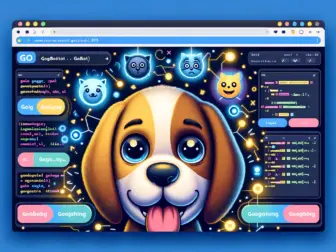Tag - IoT for Robotics
Blog , February 7, 2024 , Artificial Intelligence, Gobot, IoT for Robotics, IoT technology, Robotics
Exploring the Synergy of IoT for Robotics
As technology continues to advance, the convergence of Internet of Things (IoT) and robotics has opened up a plethora of opportunities for innovation across various industries. The integration of IoT with robotics has revolutionized the way machines interact with their environment, enabling enhanced autonomy, efficiency, and precision in tasks that were once deemed impossible for robots to perform.
IoT for robotics involves the use of interconnected devices and sensors to collect and exchange data in real-time, allowing robots to make informed decisions and adapt to changing conditions on the fly. This connectivity enables robots to be more responsive, agile, and intelligent, making them suitable for a wide range of applications such as manufacturing, healthcare, agriculture, and logistics.
One of the key benefits of IoT for robotics is the ability to create autonomous systems that can operate without human intervention. By leveraging IoT technology, robots can communicate with each other and with other connected devices to coordinate tasks, optimize workflows, and avoid collisions in dynamic environments. This level of autonomy not only improves efficiency but also reduces the risk of human error, making operations safer and more reliable.
Moreover, IoT for robotics enables predictive maintenance strategies that can help extend the lifespan of robotic systems and minimize downtime. By monitoring the performance of robots in real-time and analyzing data from sensors, maintenance schedules can be optimized to prevent breakdowns before they occur. This proactive approach to maintenance can save time and money by avoiding costly repairs and maximizing the productivity of robotic systems.
In addition, IoT for robotics opens up new possibilities for human-robot collaboration by enabling robots to gather and analyze data from their surroundings to assist humans in complex tasks. For example, in healthcare settings, robots equipped with IoT sensors can monitor patients’ vital signs and provide real-time feedback to medical professionals, allowing for more efficient and accurate patient care. In manufacturing, robots can work alongside human operators to streamline production processes and improve overall productivity.
Overall, the integration of IoT with robotics represents a significant advancement in automation technology, offering endless possibilities for innovation and growth. By harnessing the power of interconnected devices, sensors, and artificial intelligence, companies can leverage IoT for robotics to improve efficiency, reduce costs, and enhance the capabilities of robotic systems in a wide range of industries. As the technology continues to evolve, the synergy between IoT and robotics is poised to reshape the future of automation and drive unprecedented levels of productivity and performance.
